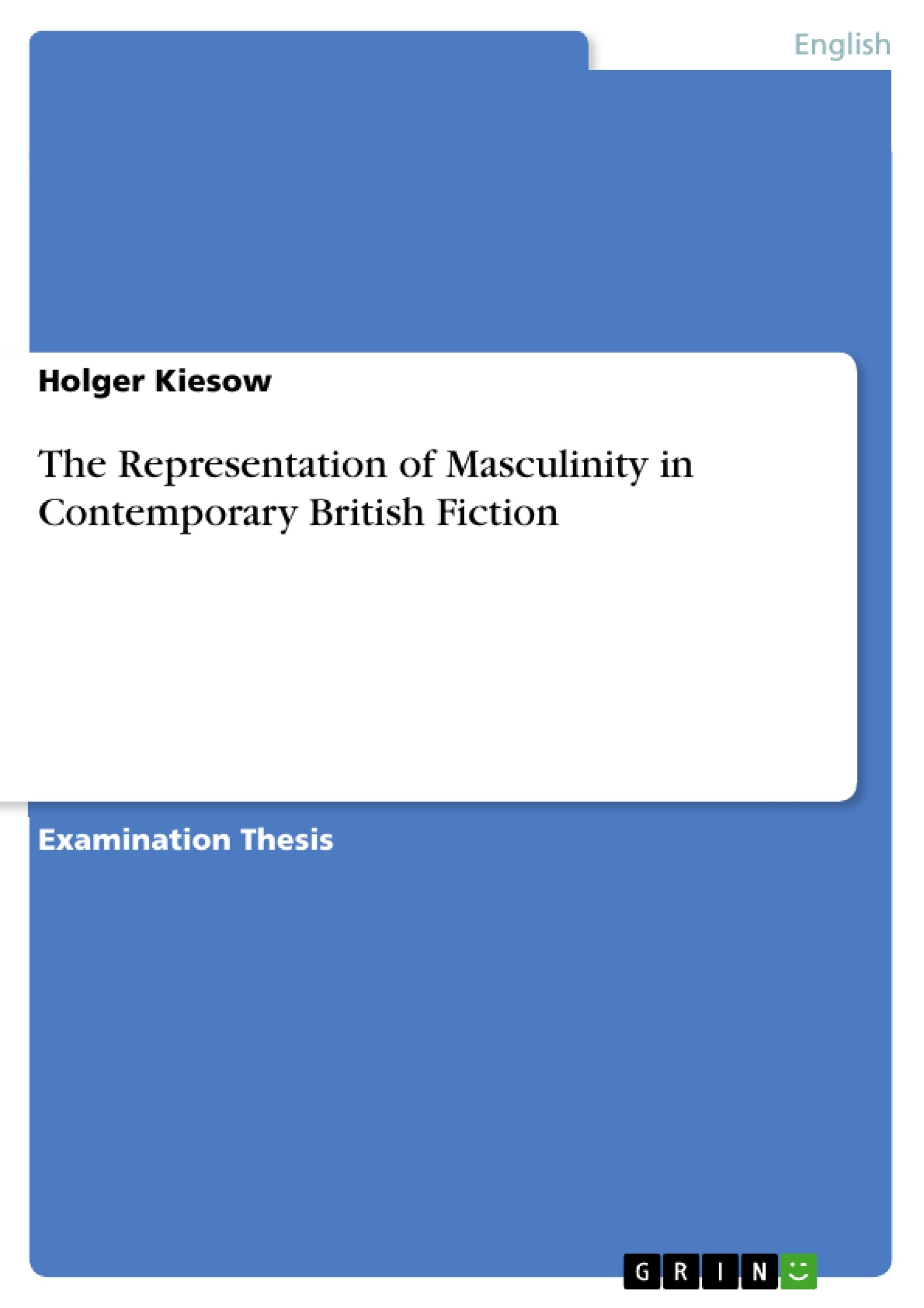From 1950 to 1999, the fiction genre of Ladlit presented British readers with a romantic, comic, popular male literature, which was regarded as a chance to examine male identity in contemporary Britain. But by the beginning of the 21st century one was seeking for a new story of masculine identity. In the meantime, the has been a focus on masculinity in language and gender studies, whereas the exclusive attention had formerly been upon femininity. The tradition of man being constituted in terms of universal, normative values has led to the phenomenon of 'invisible masculinity'. However, there has always been a discourse available to men which allows them to represent themselves as people or mankind.
The text examines how the representation of masculinities has changed in society in the recent fifty years. Using different theories of gender studies, masculinities and the effects of socio-economical changes, the following novels will be discussed: Amis's Lucky Jim (1954), Sillitoe's Saturday Night and Sunday Morning (1958), Hollinghurst's The Swimming-Pool Library (1988) and Hornby's About a Boy (1998).
Inhaltsverzeichnis (Table of Contents)
- Introduction
- Gender Studies
- Gender is a Verb
- Theoretical Approaches to Masculinities
- Sociological Concepts of Masculinities
- Men's Talk
- The Effects of Social-economical Changes in the UK on Masculinities
- Middle-class Masculinities in Kingsley Amis's Lucky Jim
- Dixon's Protest against Institutions
- Dixon and His Opponent Bertrand Welch
- Dixon's Relationship to Women
- The Climax of Dixon's Inner and Outer Struggle
- Conclusion
- Working-class Masculinities in Alan Sillitoe's Saturday Night and Sunday Morning
- Working-class Protest
- Arthur's Home and Work
- The Teddy Boy
- Arthur's Relation to Women and their Husbands
- The Reactions of the Betrayed Husbands
- The Tamed Rebel
- Working-class Language
- Conclusion
- Homosexual Masculinities in Alan Hollinghurst's The Swimming-Pool Library
- Will Beckwith's Shelter
- Will's Best Friend James
- Will's Relationships
- Will's Encounters with Other Men
- Lord Nantwich
- Homophobia
- Charles's Revenge
- Conclusion
- Masculinity in Crisis in Nick Hornby's About a Boy
- The Old Lad
- The Old Boy
- The Strange Friendship
- Life is Air
- Masculinity in Crisis
- Conclusion
- Comparison
Zielsetzung und Themenschwerpunkte (Objectives and Key Themes)
This paper examines the representation of masculinity in contemporary British fiction, focusing on the evolution of masculine identity in the Ladlit genre from the 1950s to the late 20th century. It analyzes how these novels reflect broader social and cultural changes in Britain.
- The evolution of masculine identity in contemporary British fiction.
- The impact of social and cultural changes on representations of masculinity.
- The influence of different social classes on the portrayal of masculinity.
- The emergence of alternative forms of masculinity, including homosexuality.
- The role of literature in reflecting and shaping societal norms.
Zusammenfassung der Kapitel (Chapter Summaries)
- Introduction: This chapter introduces the Ladlit genre, its historical context, and its evolution in the 20th century. It discusses the changing meaning of "lad" and highlights the genre's focus on male identity in Britain.
- Gender Studies: This chapter provides an overview of gender studies and its theoretical approaches to masculinity. It focuses on the sociological concepts of masculinity, men's talk, and the influence of social-economic changes on masculinity in the UK.
- Middle-class Masculinities in Kingsley Amis's Lucky Jim: This chapter analyzes the representation of middle-class masculinity in Kingsley Amis's novel "Lucky Jim." It examines the protagonist's struggle against societal institutions and his relationship with women.
- Working-class Masculinities in Alan Sillitoe's Saturday Night and Sunday Morning: This chapter analyzes the representation of working-class masculinity in Alan Sillitoe's novel "Saturday Night and Sunday Morning." It examines the protagonist's working-class identity, his relationships with women, and his relationship with the traditional masculine ideal.
- Homosexual Masculinities in Alan Hollinghurst's The Swimming-Pool Library: This chapter explores the representation of homosexual masculinity in Alan Hollinghurst's novel "The Swimming-Pool Library." It examines the protagonist's experiences with love, relationships, and social acceptance within a heteronormative society.
- Masculinity in Crisis in Nick Hornby's About a Boy: This chapter analyzes the representation of masculinity in crisis in Nick Hornby's novel "About a Boy." It examines the protagonist's struggle with traditional masculine norms and his search for meaning and fulfillment in a changing world.
Schlüsselwörter (Keywords)
This preview focuses on the representation of masculinity, Ladlit, gender studies, sociological concepts of masculinity, men's talk, social-economic changes, middle-class masculinity, working-class masculinity, homosexual masculinity, contemporary British fiction, and social and cultural change.
- Arbeit zitieren
- Holger Kiesow (Autor:in), 2006, The Representation of Masculinity in Contemporary British Fiction, München, GRIN Verlag, https://www.grin.com/document/67188



